Don't miss a moment of the 2024 Tour de France! Get recaps, insights, and exclusive takes with Velo's daily newsletter. Sign up today!.
Dangerholm is best known for his wild custom mountain bike builds, but this time around he decided to create his ideal gravel bike and call it a super gravel bike. Read on to learn more about the process behind his build. – Ed.
What is a Gravel Bike?
Gravel is a well-established bike category these days. In most cases, they’re essentially very beefed-up road or cyclocross bikes, with a more capable geometry, wider flared drop-bars, and 40-50mm wide tires. Sure there are exceptions to this, especially if we look into the world of small brands and frame builders, but it definitely is the norm. Ask almost anyone in the cycling world what a gravel bike is and they’ll describe a drop-bar bike with knobby tires.
It’s not a big surprise really, since after all they’re meant to be ridden on gravel roads, and they definitely are amazing bikes. I have one myself and I think it’s great. But there’s one thing that always sort of has been bugging me a little ever since the modern gravel bike became a thing: I had already been riding gravel for many years and really enjoying it too, but on completely different bikes. Mountain bikes, to be more specific.
Of course, it goes the other way around too, or even more so, with people riding gravel on their road bikes a hundred years ago already. But it’s interesting how the “road-based” gravel bike became almost completely dominant and now is what everyone expects you to ride if you say you ride gravel. I recently brought the bike you see featured here to a big event and while people liked it a lot, many were visibly confused trying to figure out what kind of bike it actually was. The thought of using a mountain bike for gravel riding obviously being so out there, that not even the rigid fork or gravel-sized gearing made them see it at first.
To me on the other hand, coming from a mountain bike background with gravel early on becoming a big part of my training rides when I started XC, a hardtail or fully rigid MTB is the perfect gravel bike. And while I’m in the minority for thinking so, let’s have a look at some of the pros and cons for each style.
MTB Gravel
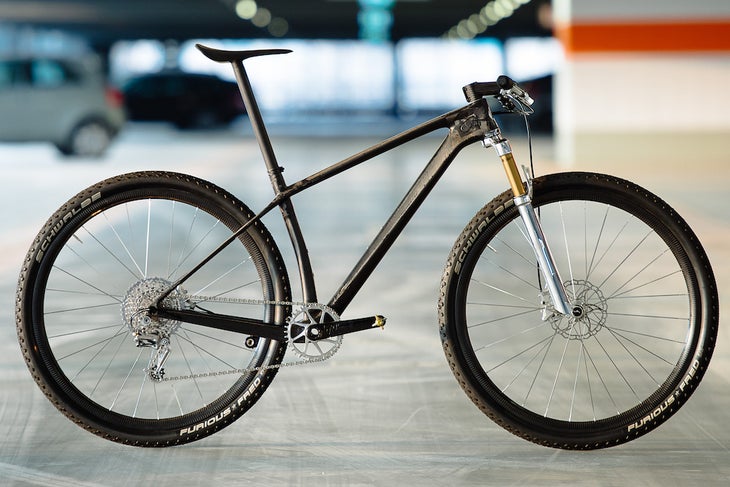
Surprisingly fast and super fun, you can pop manuals on every downhill. Much more capable as well, offering great control and lets you tackle more technical sections. They’re also very comfortable thanks to big-volume tires and thick grips. Weight is pretty much the same.
The biggest downside at the moment is that there are essentially no frames available that have clearance for big enough chainrings. But that could in theory change, especially now with the wider 55mm chain line becoming the new standard.
Drop-bar Gravel
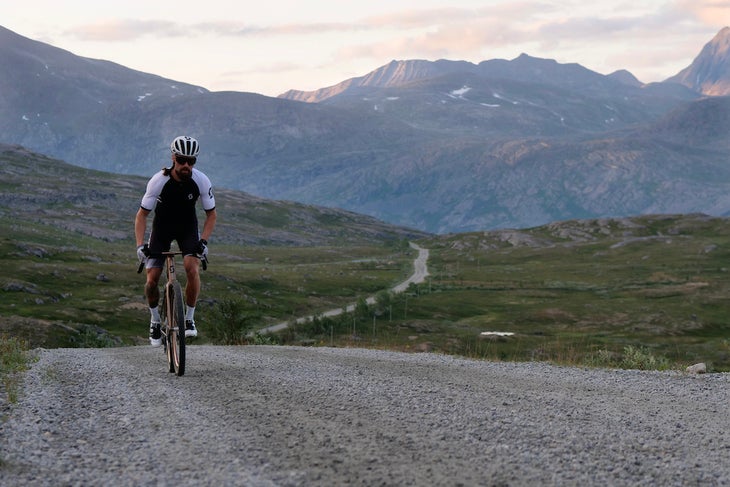
A bit faster on some sections and terrain, generally because of the more aerodynamic body position from the handlebars. Some people also really like the different hand positions that said handlebars offer, which can be comfortable on long rides. These bikes are of course also already available with clearance for big chainrings.
On the other hand, these bikes are definitely more limiting when it comes to technical sections, and not as comfortable because of the narrower tires.
I could go in-depth and write a small essay on this topic, but as you can see there are a few very appealing pros with an MTB-based gravel bike. Especially if you’re already used to mostly riding mountain bikes, but also in general. From riders being able to link new gravel routes together thanks to better being able to tackle connecting trail sections, to the beginner feeling safer and more in control.
My point is there is reason and room for MTB-based gravel bikes to really be a thing, in a wide range of styles. It could be similar to what you see here or 50mm super light full suspension bikes. It could even be dirt jump-inspired manual machines that also would let you go for fun long-distance rides.
So, I’m absolutely not claiming to have invented something new with this “Super Gravel” build. Except for it being an amazing bike to ride and look at I simply want to show and push the concept, and perhaps help give people a more open-minded view on what makes a gravel bike.
Because if you were to ask me, my hope is that 5-10 years from now the first thing you’d hear when entering a shop looking for a gravel bike would be: do you want a drop-bar or flat-bar style bike?
I’d even happily take all the “it’s just a 90’s MTB, we’ve gone full circle” jokes too.
The frameset
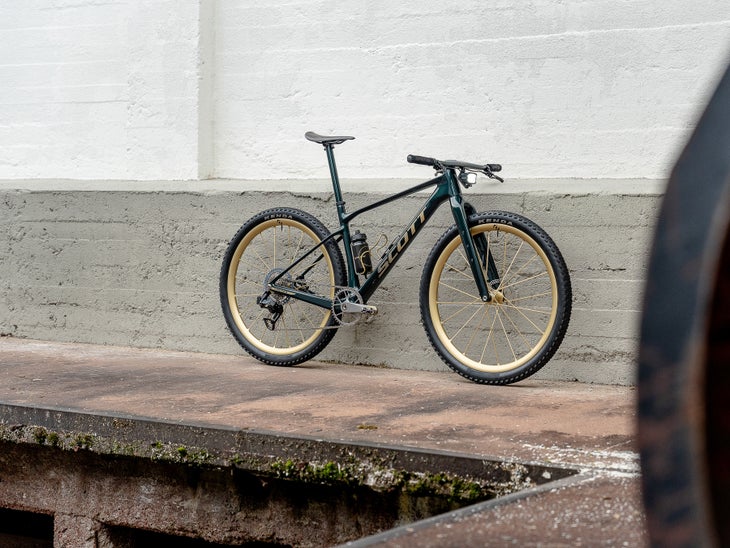
For 2023 Scott brought out a brand new generation of their Scale RC hardtail mountain bikes. The Scale is one of those bike model names that’s been around for what seems like forever, and it has been propelled by Nino and others to plenty of race victories. These days you probably see more of its full-suspension sibling named Spark, but that doesn’t mean that there’s no place for a quick and responsive hardtail.
With this latest generation, the Scale RC has followed the common recipe of longer and slacker, but it also features some new interesting design details.
An incredibly user-friendly thing is the new service door at the down tube just in front of the bottom bracket. This allows you to super easily install a dropper post on the bike or doing service involving the other cables, with no more worries about removing cranksets and bottom brackets. A more subtle but still pretty cool update is the bottle cage inserts, so you can now just plug the holes that you don’t use.
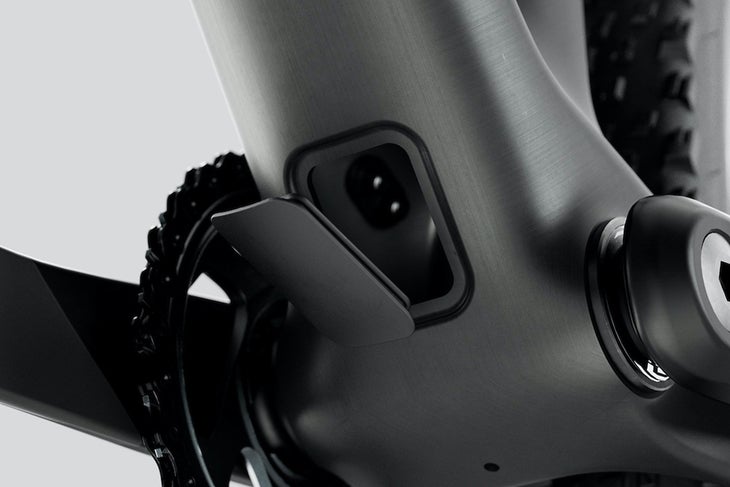
The Scale now also comes with headset cable routing, but before you get too worked up about that please continue to read to see an example of a cool custom feature that these three things together allow.
Featured on this build is the Scale RC World Cup version in size Large. This is the HMX carbon quality level frame, which sits in between the HMF and HMX-SL. While all three have gotten lighter for 2023, I can happily inform you that you actually get the most bang for the buck with the entry-level HMF model when it comes to weight savings. It dropped from 1139g to 1013g, and the other two now sit at 847 grams and 912 grams respectively.
It should be noted that the max recommended chainring size is 38T, while you see me running a bigger size on this bike.
The project name “Super Gravel” is not me trying to ruffle some feathers by introducing a new gimmicky bike category name, but simply a bit of fun wordplay. If you’re familiar with the Scott model range, you know that Super Trail or ST is the name for their longer travel and more capable Spark and Genius models. So it felt like the perfect name for a Scale that brings it up a notch compared to regular gravel bikes.
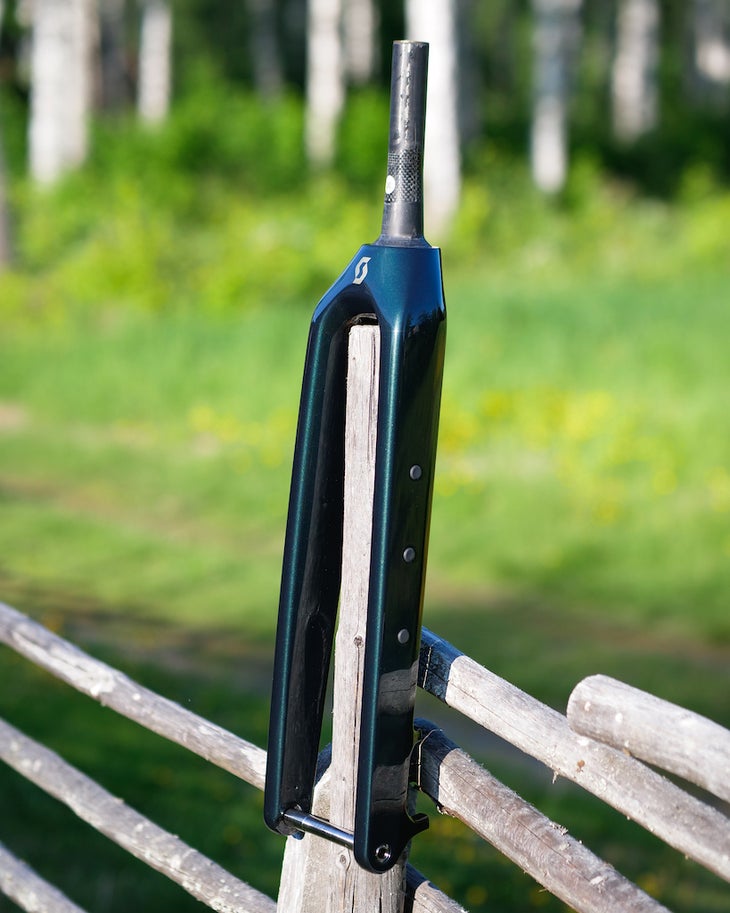
Up front, you’ll find the new 2024 Scott Scale Rigid fork. This is not available on any complete build, but available as an aftermarket product to be used on the Scale or any other hardtail. It’s easy to think that a rigid fork is just a simple rigid fork, but there are some things well worth noting with this one.
First of all, there’s the option of running the front brake internally, just like on a road or gravel bike. So finally we can get those super clean looks. You can still however run the fork with a hose attached externally, which may be the sensible thing to do if you often switch between the rigid and a suspension fork.
There’s also the possibility to mount accessories on both fork legs, making it a great companion for bike packing or adventure riding.
Another interesting thing is the geometry, as in the axle-to-crown measurement. Unlike many other forks, it’s quite short at 471mm which is similar to a 100mm travel fork at sag. Some people might prefer a longer axle to crown distance to make the bike feel just like with a suspension fork locked out, but for the intended use that a rigid fork implies it can make a lot of sense with the slight geometry change that comes from having it at sag equivalent.
The weight is very competitive at just above 600g.
Handlebar and Seat Post Combo
Hidden inside the custom-painted headset cups you’ll find a set of CeramicSpeed SLT bearings. Despite the name, these aren’t ceramic but fully made from stainless steel as there is no use for extra low friction in a headset. Instead, they are filled with a solid plastic polymer which replaces traditional grease, and stops dirt and water from entering. They are also self-lubricating thanks to the polymer being porous, which explains the “Solid Lubrication Technology” or SLT name.
Said headset cups can easily be rotated 180 degrees to change the head tube angle by +/- 0,6 degrees, and I run this bike in the steep position.
On top, there’s a Syncros Fraser iC SL one-piece carbon handlebar combo in 80mm length, 720mm width, and -20 degrees angle. Lightweight and strong, its design also helps the cables to enter nicely into the frame.
Another key feature is that there are a lot of different mounts available for computers, lights and so on. While branded Syncros, these mounts are made in the USA by K-Edge.
I’m running the super comfortable Syncros Foam grips, a personal number one favorite as they offer the perfect blend between silicone and foam grip feel.
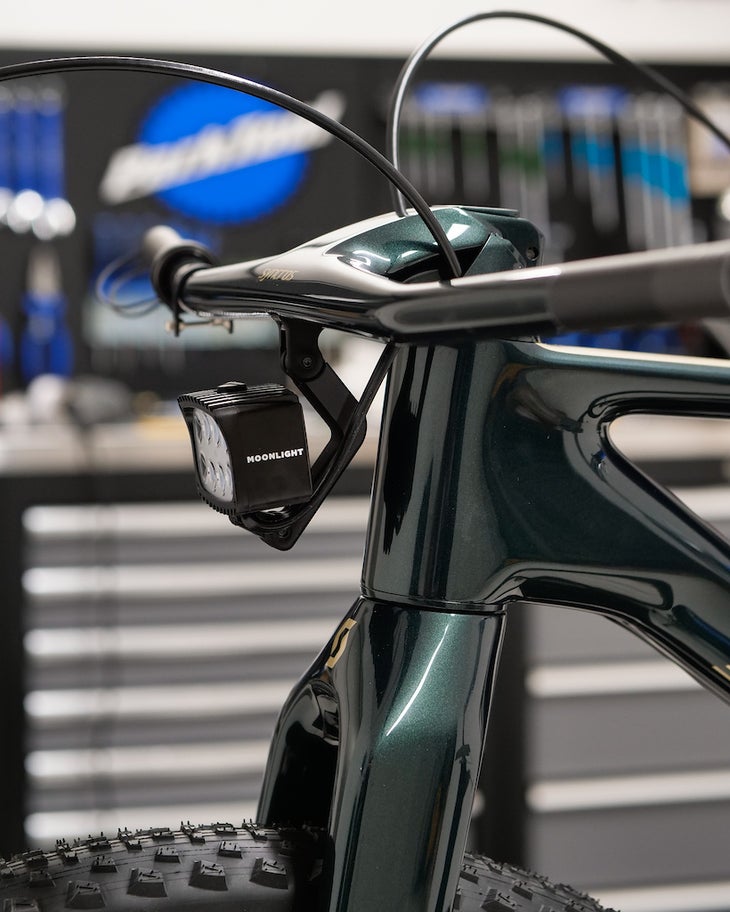
The seat post is made by Schmolke Carbon in Germany and comes in at around 120g. But weight is actually not the main reason for running it, as it is a test-winner for comfort thanks to being very flexible. It’s possible to order them by rider weight so that you can get the most out of them and it’s a great way to take some harshness out of your rides.
The seat is even lighter and even more flexible, so much so that the carbon shell actually has a “soft” feeling if you press on it with your thumbs. It’s an old prototype saddle from Slovenian brand Berk Composites and is soon entering its seventh year of use, which is impressive considering it weighs only 60g.
Front Light
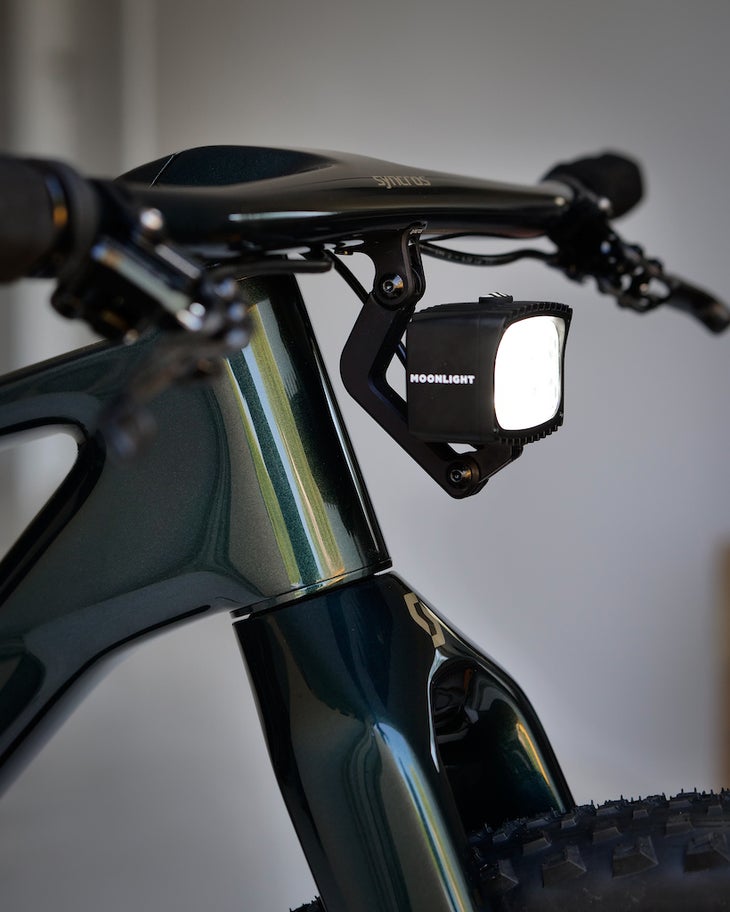
With autumn and short days being upon us it’s no big surprise to see a light on a bike. Personally, however, I actually like having a bike with lights mounted almost year round as it allows me to go on those long cool-temperature evening rides without having to worry about being back home before the sun sets. So some more food for thought: lights aren’t just for winter riding.
Either way, I want powerful and reliable lights but I’m also always trying to achieve clean looks so for this build I went all in on the integration. And the new Scale RC really does allow for a cool setup.
For 5 or 6 years now I’ve been using lights from a relatively unknown and small Norwegian brand called Moonlight Mountain Gear. Founded in what’s truly the far north of Norway, where the sun doesn’t rise above the horizon for a couple of months each winter, they make some really good quality lights.
In the past, they offered fan-cooled models up to 12000 lumen and prototyped even brighter ones, but these days they focus on more sensible versions like the Bright As Day 4000 (lumen) you see here.
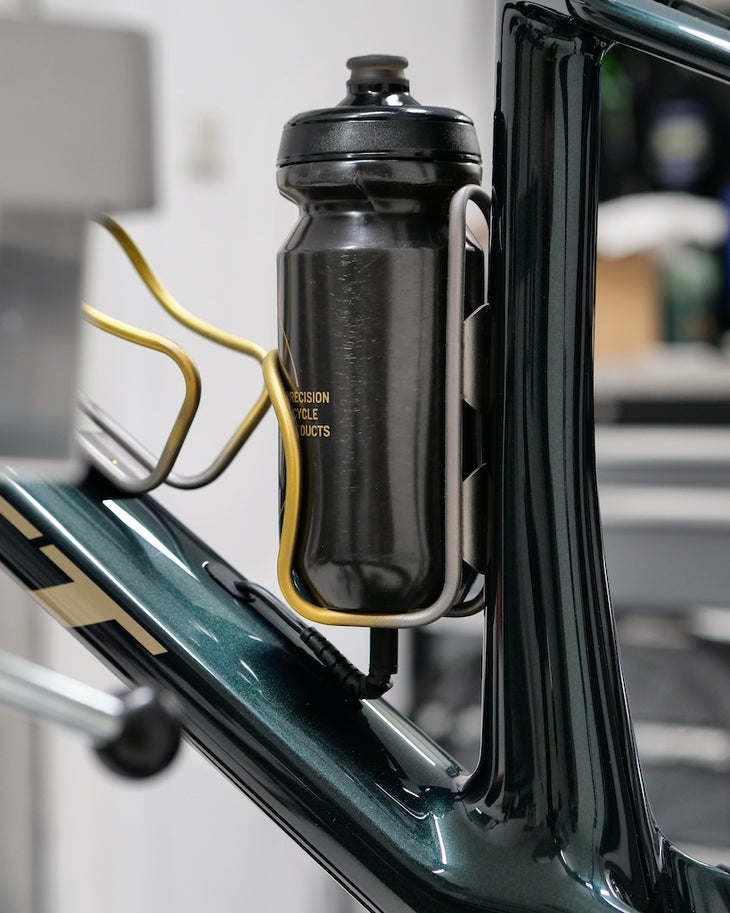
What sets Moonlight apart from a lot of the competition is that if it says 4000 lumens it really does deliver a constant output of 4000 lumens. No overheating, fading, or other funny business-like boost modes that drop back down. One part of this is the cooling fin design aluminum housing, and the battery time is 1.5 h at full output, 3h at 2000 lumen, and so on.
It features a GoPro mount interface, so to install it on this bike I started with using a Syncros GoPro direct mount for the handlebar. You can either run it with the long arm to position it right side up as shown here, or you can go for a more compact solution mounting it upside down directly below the handlebar.
The cable is routed through the frame down to the service door, where it was cut. The other end was then inserted into the frame through one of the bottle cage insert plugs, and the two ends were connected with a simple but waterproof gel connector. As for the battery itself, it is hidden inside the slightly customized foam-padded Syncros bottle. When it’s time to charge it you just take the bottle out.
The complete system including the bottle and mount adds 650g to the 7,67kg weight of the bike.
The very nice bottle cages are Sturdy Cycles titanium cages.
Brakes
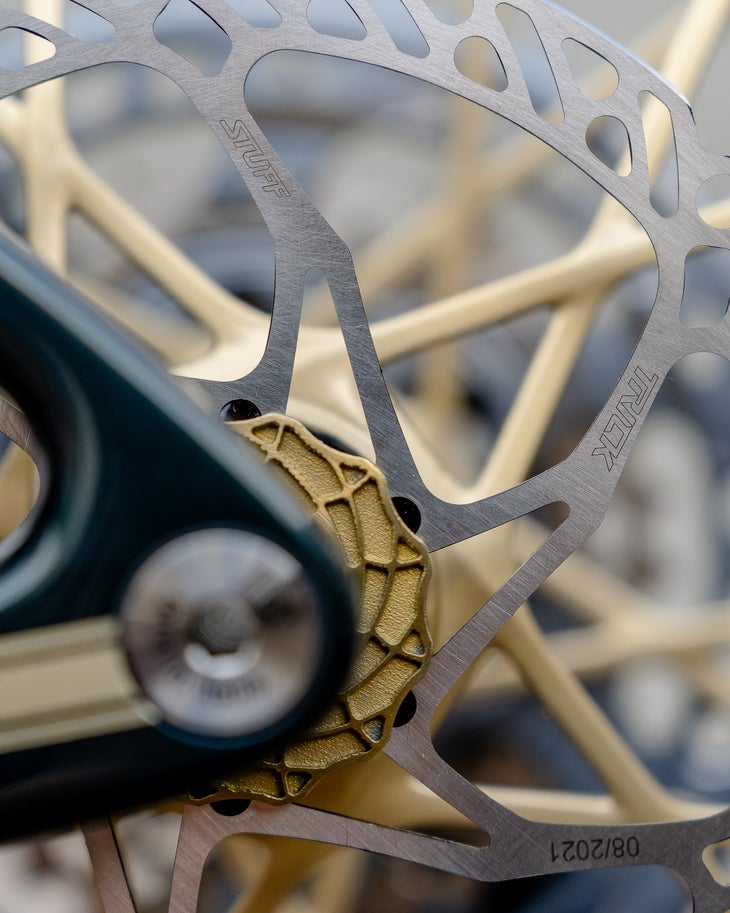
To no big surprise I’m running Trickstuff Piccola Carbon brakes on this bike, and by now most of you probably already know that they are the lightest brakes out there while also being very powerful with superb lever feel. But perhaps the best example of how good I think they are is that when I sell a bike I first order a set of “normal” brakes and take the Trickstuffs off to use on the next build.
Some also seem to believe that me running Trickstuff on so many bikes is the biggest reason for the long delivery times. But they actually do prioritize existing orders, and I waited some 16 months for the brakes you see on this bike. Luckily for all of us, the delivery times are finally getting shorter and shorter. But even if you have to wait, I say they’re worth it.
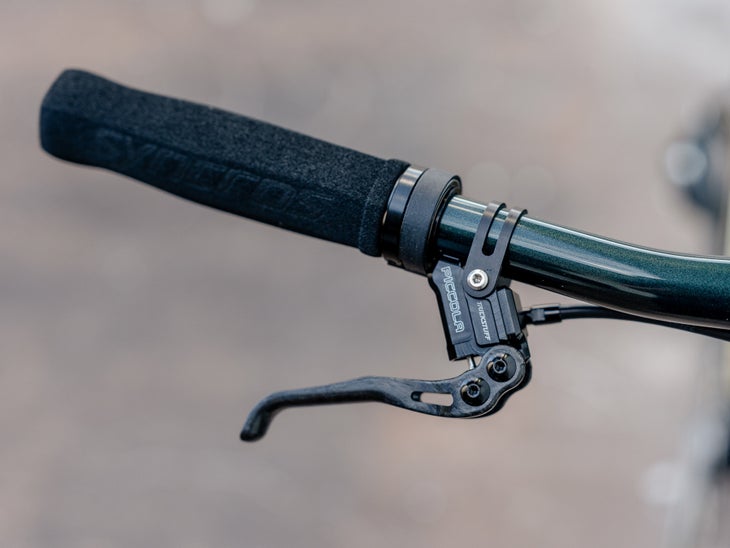
A really cool feature on the Piccola’s is that they’re available with two different types of hose connectors at the levers. There’s the standard one putting the hose at a traditional front-facing angle, but there’s also a connector option for internal routing as seen here. This puts the hose super close to the handlebar and creates a very clean look.
The brakes are paired to Trickstuff Dächle UL brake discs in 160mm, which strike a great balance between low weight and braking performance.
If you take a closer look you’ll see some very special lock rings. These gold anodized little works of art are actually 3D printed from titanium, coming from UK brand Sturdy Cycles. Pretty much zero performance gains, but my inner bike nerd doesn’t care one bit about that because… well, just look at them.
Shifting
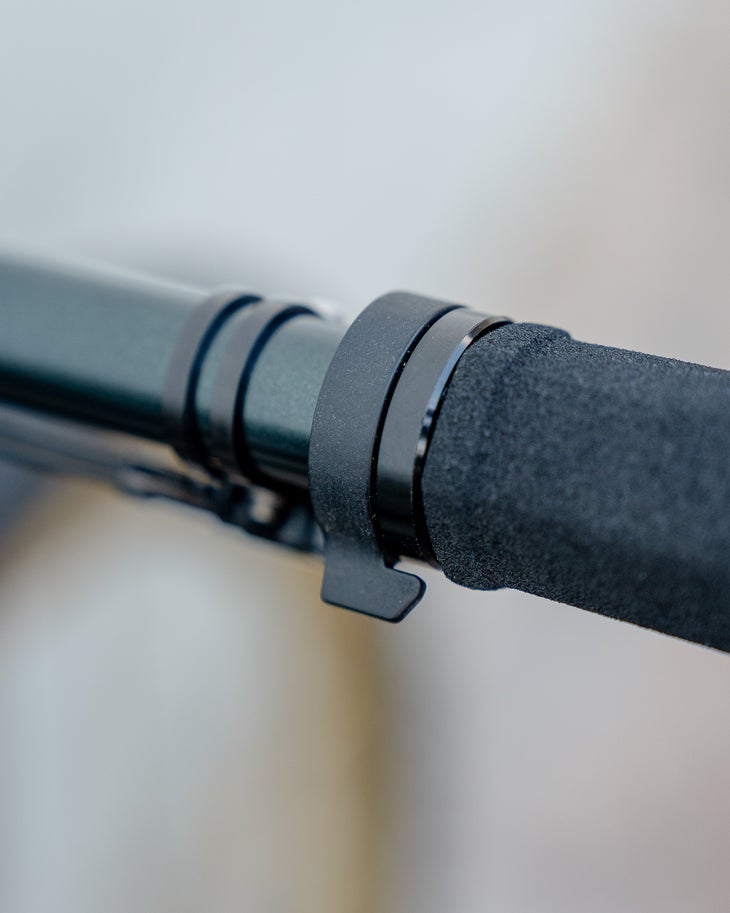
With no suspension remotes to worry about, this bike was a perfect opportunity to go for really clean looks. So for the shifter I opted for the minimalistic Zirbel WE03 ring shifter. Normally these plug straight into a standard Sram BlipBox, but here I’m running a custom setup with the PCB and battery hidden inside the handlebar.
Clean looks aside, I can’t stress enough how ergonomic and good these controllers really are though. The action is light enough to use the knuckle of your thumb without letting go of your grips at all, yet they have a very tactile and distinct feel to them. To me, the key to the Zirbel’s great feeling, and what other electronic shifters lack, is the way they blend mechanical and electronic shifters by offering a bit of travel or stroke. It’s not just a millimeter short button “click” but you actually have some travel in the lever, which gives a more distinct feeling when shifting.
The WE03 version features strong small magnets acting at springs and runs on a sealed bearing for worry-free performance. The paddle itself can be 3D printed in any shape you wish.
The rear derailleur is a Sram Red XPLR tuned with screws from Carbon-Ti to go with the gold theme and a CeramicSpeed 3D printed titanium OSPW system.
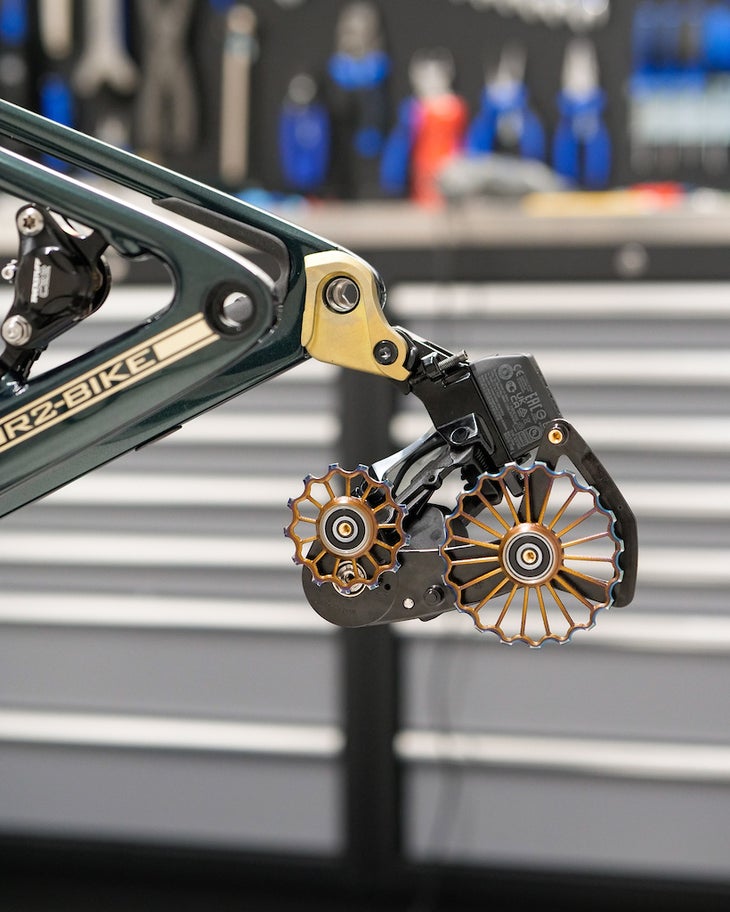
When first introduced back in 2015 as an R&D project, CeramicSpeed did not expect to bring 3D-printed titanium pulley wheels to the market as they knew the price would be completely outrageous. They made 10 sets, planning to give them away to athletes, but after bringing them to their first show they were all sold and 8 years later the concept is still going strong. So before you complain or blame CeramicSpeed for selling expensive bike parts, remember that it simply is because there is a market for it with crazy people like myself.
The oversized version you see here features hollow spokes on the pulley wheels and an oil-slick PVD-applied aluminum titanium nitride finish. PVD is short for physical vapor deposition which is a (to me) science-fiction-sounding process of metal vapor being deposited at a high vacuum and adhering as an alloy coating.
Also worth noticing in the photo below is the golden Sturdy Cycles 3D-printed UDH hollow titanium derailleur hanger. Yes, you read that right.
Drivetrain
Continuing with the rest of the drivetrain you’ll find a 9-45T e*thirteen Helix Race Gravel cassette. Weighing in at 319g this cassette offers a 500% range, thanks to its 9T small cog, while being compatible with both XPLR and Eagle derailleurs. It could of course be argued that I get a bit more chain friction running a 9T cassette so why pair it with an OSPW cage, but the answer is of course overall drivetrain efficiency and also more importantly that the small cassette cog compensates for not being able to run for example a 46T chainring up front on this frame.
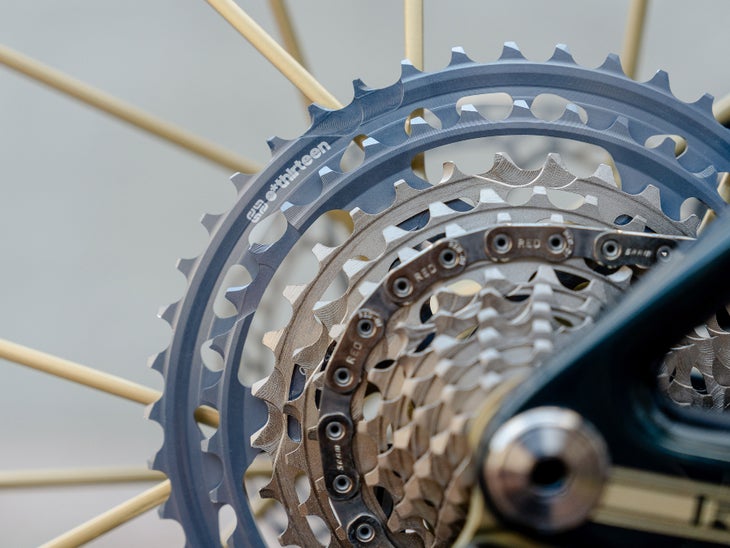
A Sram Red Flattop chain then connects to a very special crankset. The crank arms are another 3D-printed titanium wonder from Sturdy, with the axle and all hardware also being titanium. To me, it’s quite fascinating seeing big printed metal components like these in real life.
Then we arrive at the Dward Design “DangerDward” chainring. This is the first ever Dangerholm signature product, though I’d say it would be more fair to call it a passion project.
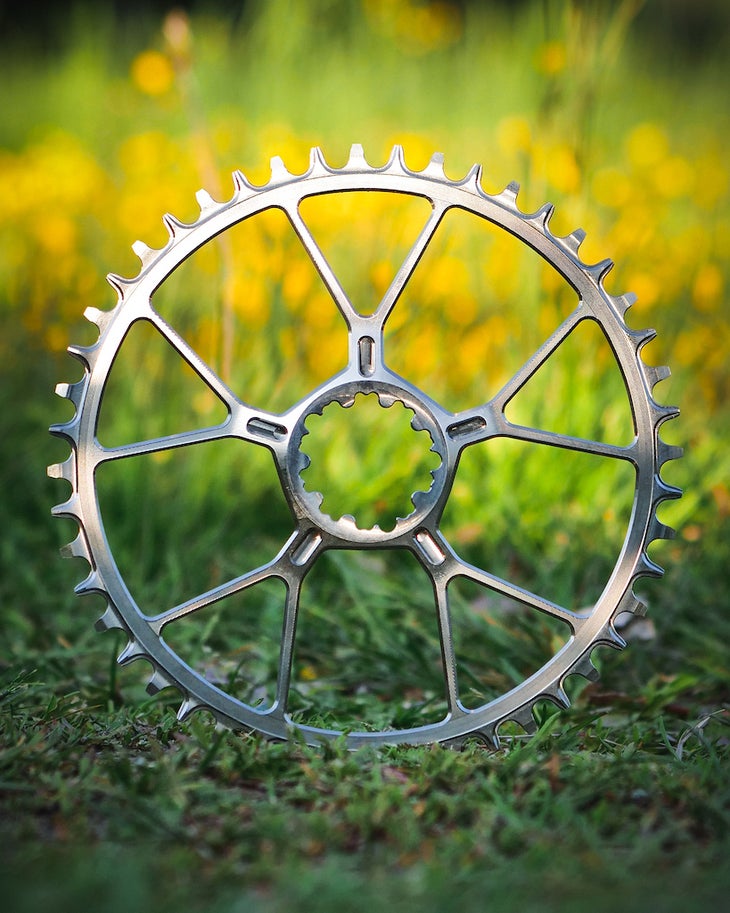
With many chainrings today being a bit bulky in their design, I kept wishing for a truly timeless and elegant model. Inspired by old vintage bike steel chainrings and modern classics of car wheels, I approached Dward Design in the UK with my idea. He then did the actual CAD work, FEA testing, and machining and here we are with a finished product. Since it’s made out of titanium it allowed for the relatively thin-appearing spokes while maintaining strength and low weight. On this bike, I’m running a 42T.
Being made in small batches in the UK, or even as custom one-off variants, they are indeed very expensive. But as mentioned above this was a passion project. It’s something to add to your bike simply because you love the design and classic looks, not because it’s supposed to make sense or be a great value product. But perhaps it is of some comfort to know that titanium chainrings usually last around three times longer than aluminum ones.
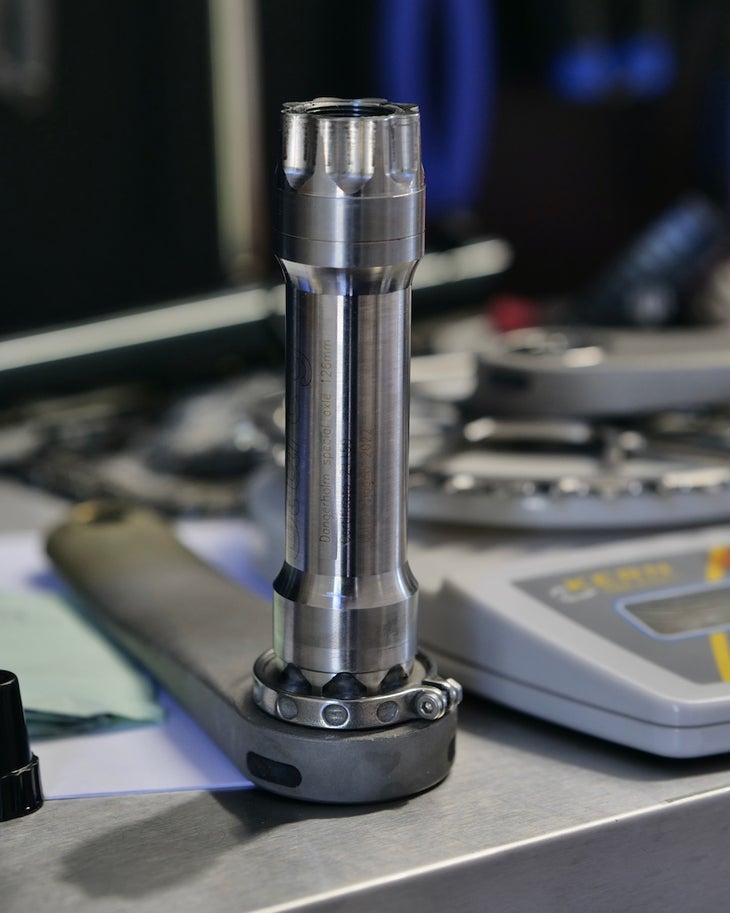
It all spins on a CeramicSpeed bottom bracket, and finally, there are the Shimano XTR pedals tuned with a Meti Rapido titanium axle kit.
Meti is a small but great one-man show from Italy run by Dante Codeluppi, who specializes in machining various standard and custom titanium thru axles, bolts, and more. For example, he’s the one behind the Sturdy crankset axle as seen above. He also offers a titanium axle replacement kit for XTR as used on this bike, and except for looking very nice the two main benefits are weight reduction and better seals.
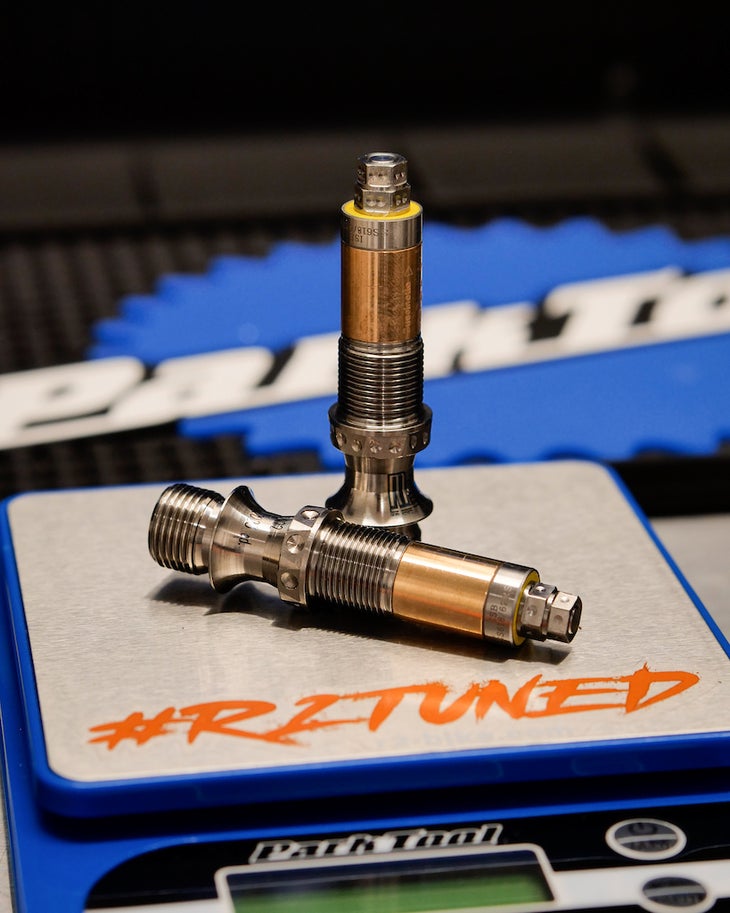
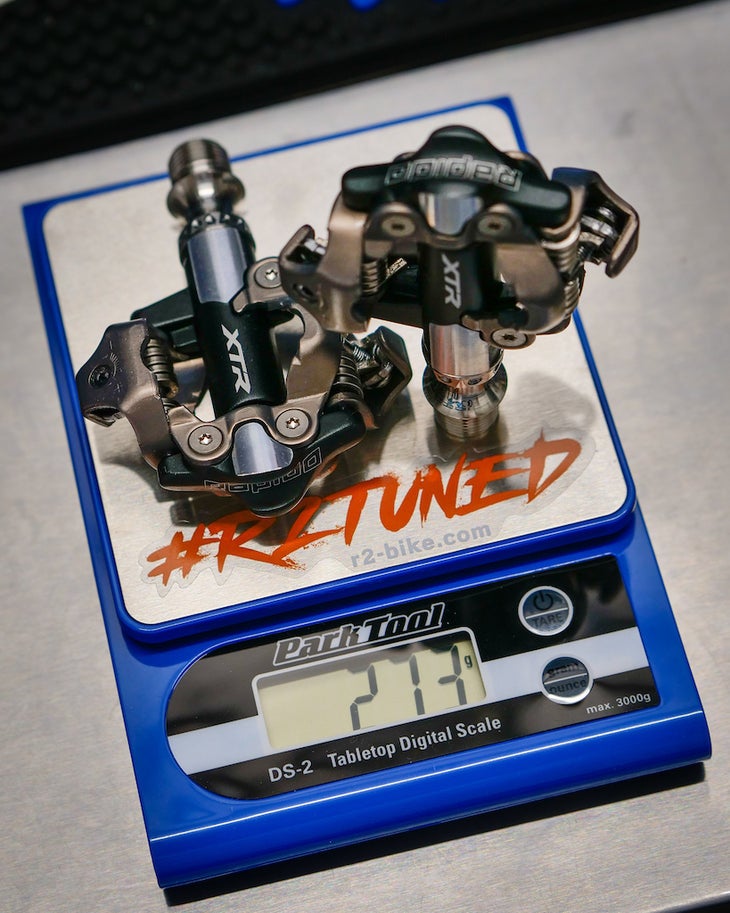
The kit, which comes pre-assembled and is installed within minutes, saves around 40g and features completely different and bigger seals. Even though the XTR pedals arguably are some of the best you can get, they’re not completely flawless as the seal between the axle and pedal body is known to sometimes pop out. But this design addresses that, making sure the seal stays in place.
Wheels
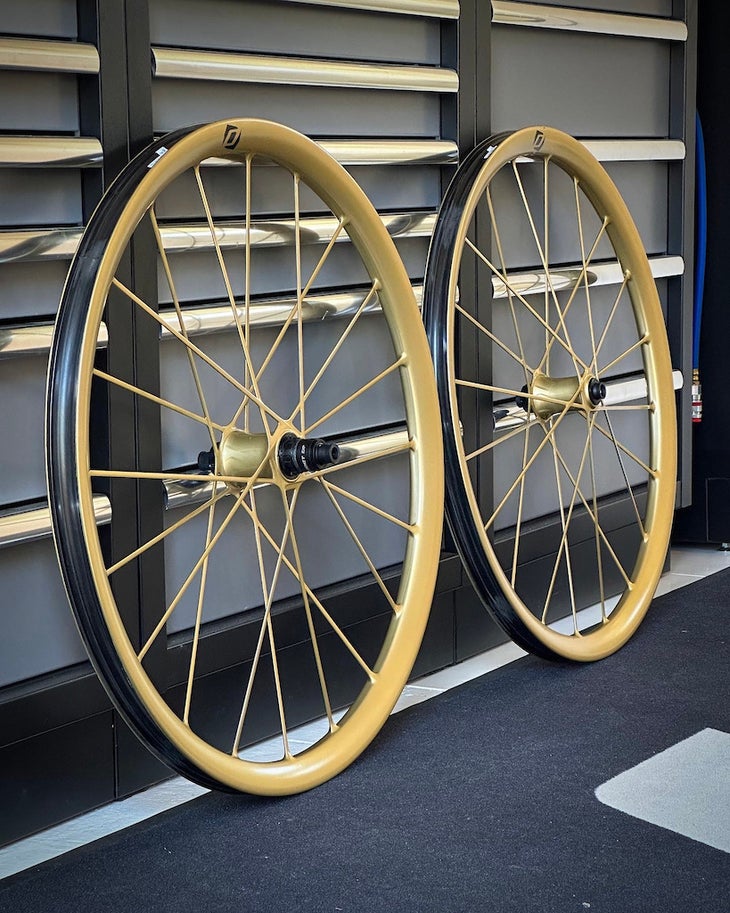
The wheels are the full carbon Syncros Silverton SL featuring 30mm inner width rims and a weight of 1255g in the standard raw carbon version. Maybe you think that’s not super light, but it’s worth noting that these wheels come on for example e-MTB trail bikes too so they’re very strong considering that number. The carbon construction makes them super responsive and quick feeling, partially because the construction moves weight closer to the center of the wheel.
When produced the rim section and spokes are molded in one single step, with the spokes actually being made from continuous carbon fibers going from one side of the wheel all the way over to the other.
As a final step, the center section is pushed apart to create tension and the hub shell is then bonded in place. The custom gold paint on this set added around 60g of weight.
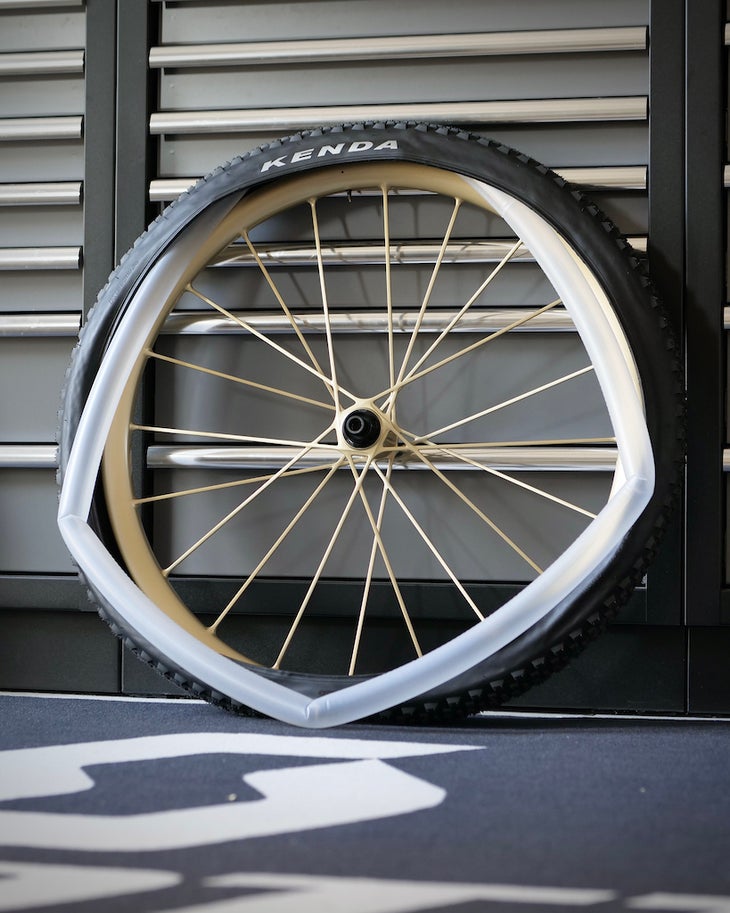
For tires, I opted for the lightweight and fast-rolling Kenda Rush Pro TR, which comes in at below 650g in 2,4″ width. A very competitive weight these days, and you can really notice it on a bike like this.
They can of course be set up tubeless, which I sometimes do, but perhaps a bit surprisingly I run this bike with tubes most of the time. However, the Revoloop Revo.MTB Ultra is not your regular old heavy butyl tube. These come in at around 45g per tube and are quite durable at that. So they help keep the rotational weight to a minimum and they’re also perfect to carry as a spare since they are so compact.
As to why I run tubes in the first place, it comes down to two things. If you, like me, run relatively high pressures so that you don’t have to worry too much about pinch flats, then it can actually work very well on a gravel bike. It also makes it zero hassle to switch between different tires and so on. In a race situation, I’d probably opt for tubeless, and of course, it depends on your local terrain too, but I still think there’s a time and place for lightweight quality tubes.
The wheels are held in place with Meti titanium thru axles.
Scott Scale RC Super Gravel – 7,67 kg / 16.91 pounds
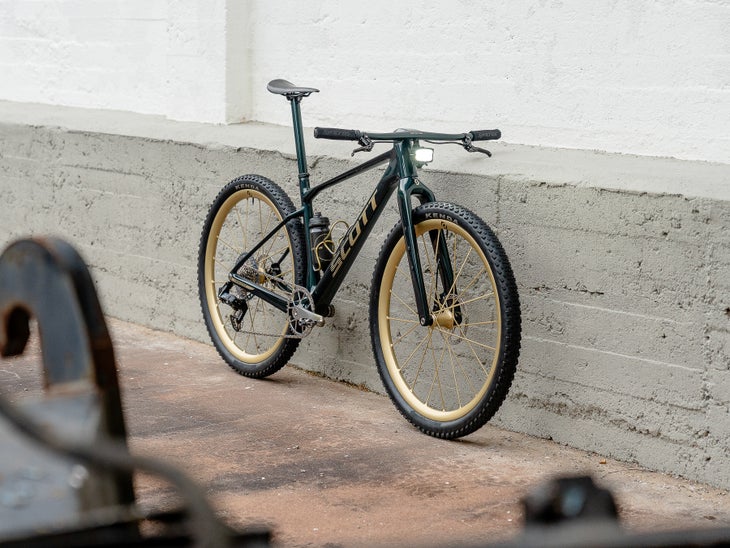
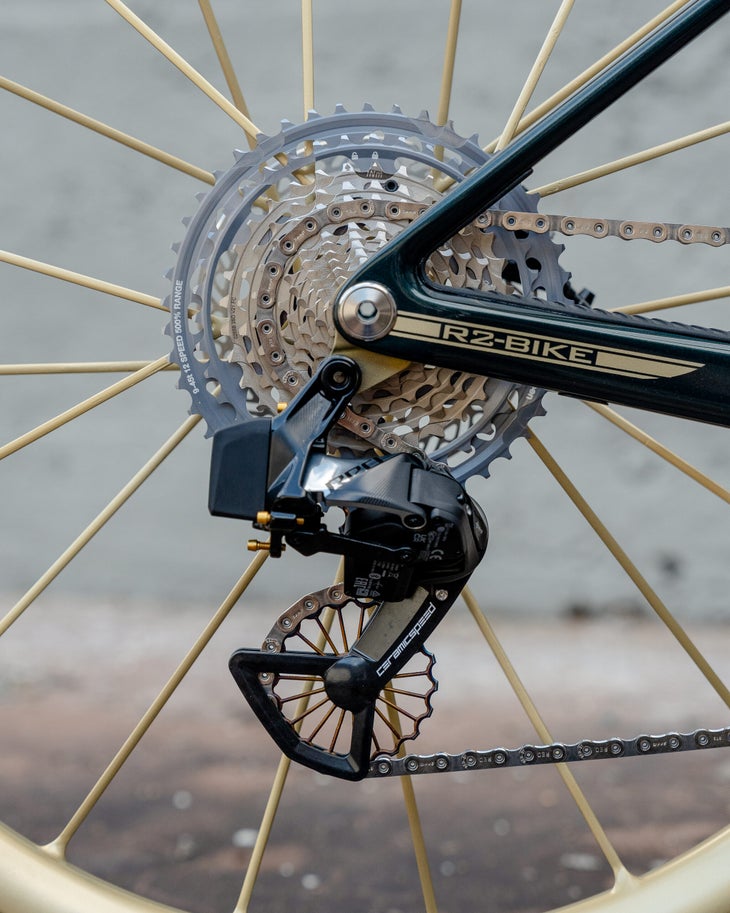
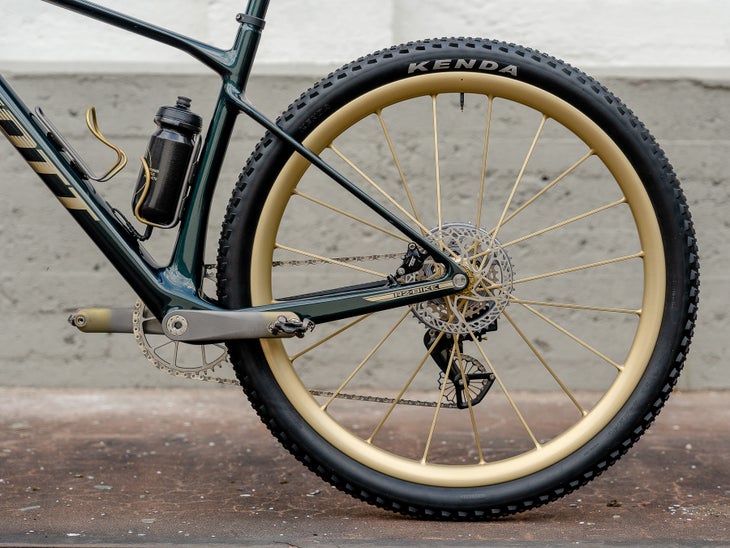
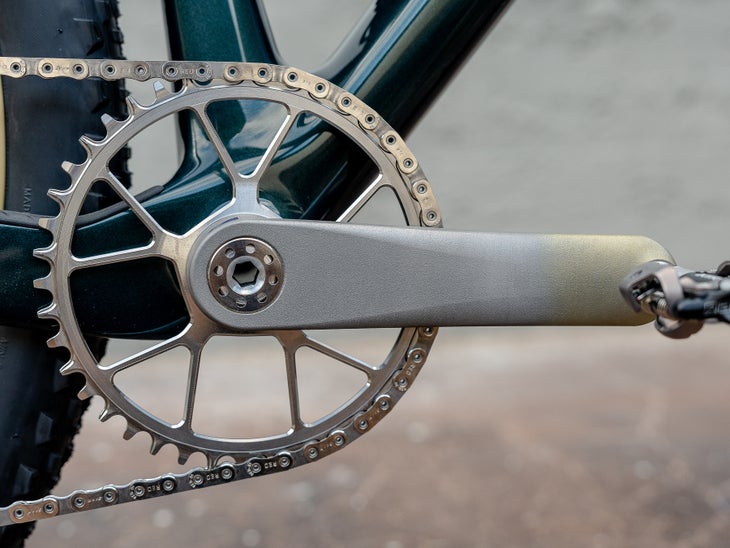
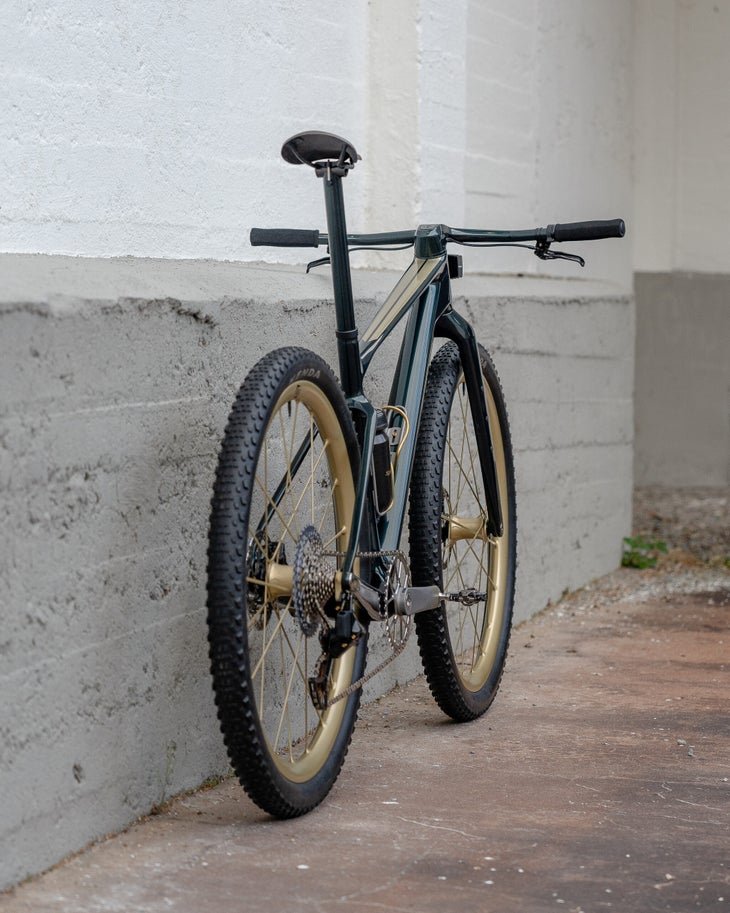
Conclusion
So, what do you think?
About the bike of course, but also about the concept and idea in general. Perhaps you already ride a lot of gravel on your mountain bike, and this whole thing is old news? Or perhaps reading this article suddenly made you think that maybe gravel riding could be pretty fun on a bike similar to this, instead of on a “standard” drop-bar gravel bike?
I’m looking forward to hearing your thoughts, and if you have any questions about the bike and all the wild components – don’t hesitate.
In case you think I didn’t go all in enough on this project already, here’s a matching custom-painted helmet and glasses to round things off.
Along with the traditional Lemmy shorts pic of course, sorry you had to do so much scrolling.
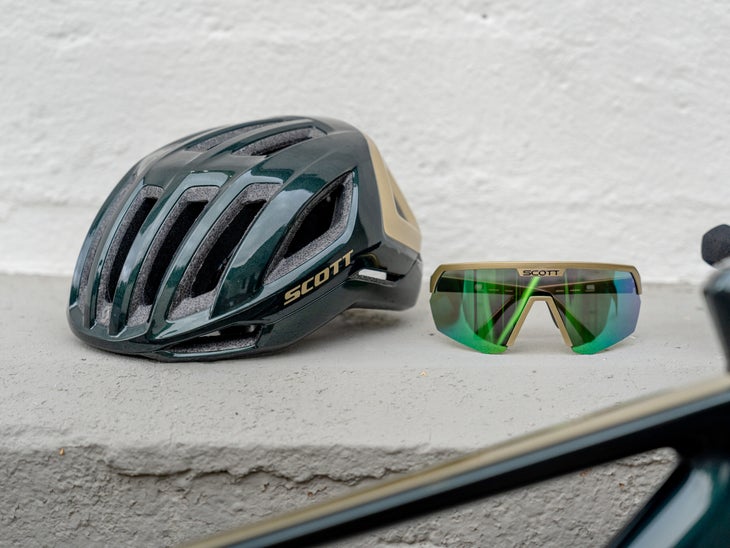
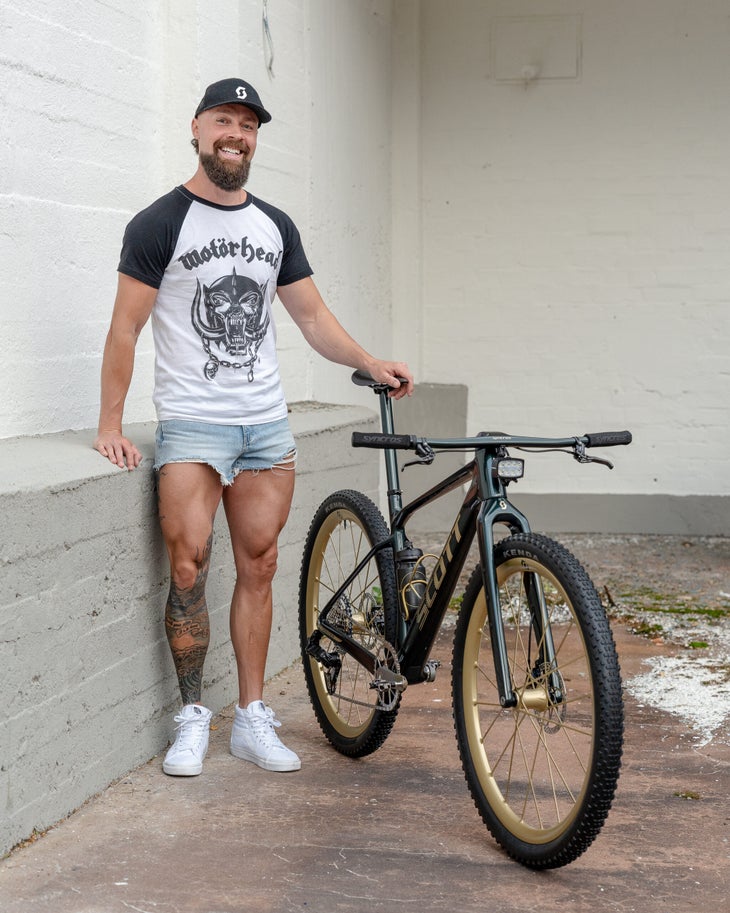
Specs: Dangerholm’s Scale RC Super Gravel
| Spec List | |
| Frame | SCOTT Scale RC World Cup size Large |
| Derailleur hanger | Sturdy Cycles 3D printed titanium |
| Fork | SCOTT Scale Rigid |
| Thru Axles | METI Titanium |
| Headset | Syncros with CeramicSpeed SLT bearings |
| Handlebar | Syncros Fraser iC SL 80mm -20degrees 720mm |
| Grips | Syncros Foam |
| Seat post | Schmolke Carbon TLO |
| Saddle | Berk Composites |
| Crankset | Sturdy Cycles MTB 3D printed titanium |
| Chainring | Dward Design ”DangerDward” 42T |
| Bottom bracket | CeramicSpeed |
| Pedals | Shimano XTR with METI Rapido titanium axles |
| Chain | SRAM RED |
| Cassette | e*thirteen Helix Race Gravel 9-45T |
| Rear derailleur | SRAM RED AXS XPLR with gold Carbon-Ti limit screws |
| Rear derailleur cage | CeramicSpeed OSPW 3D printed hollow titanium |
| Wheels | Syncros Silverton SL |
| Tires | Kenda Rush Pro TR 2.4” |
| Tubes | Revoloop Ultra MTB |
| Brakes | Trickstuff Piccola Carbon |
| Brake discs | Trickstuff Dächle UL 160mm |
| Lockrings | Sturdy Cycles 3D printed titanium |
| Bottle cages | Sturdy Cycles titanium |
| Front light | Moonlight Mountaingear Bright As Day 4000 |
| Total weight including pedals | 7.67 kg/16.91 pounds |
| (Add 650g for the complete light system including bottle and mount) |